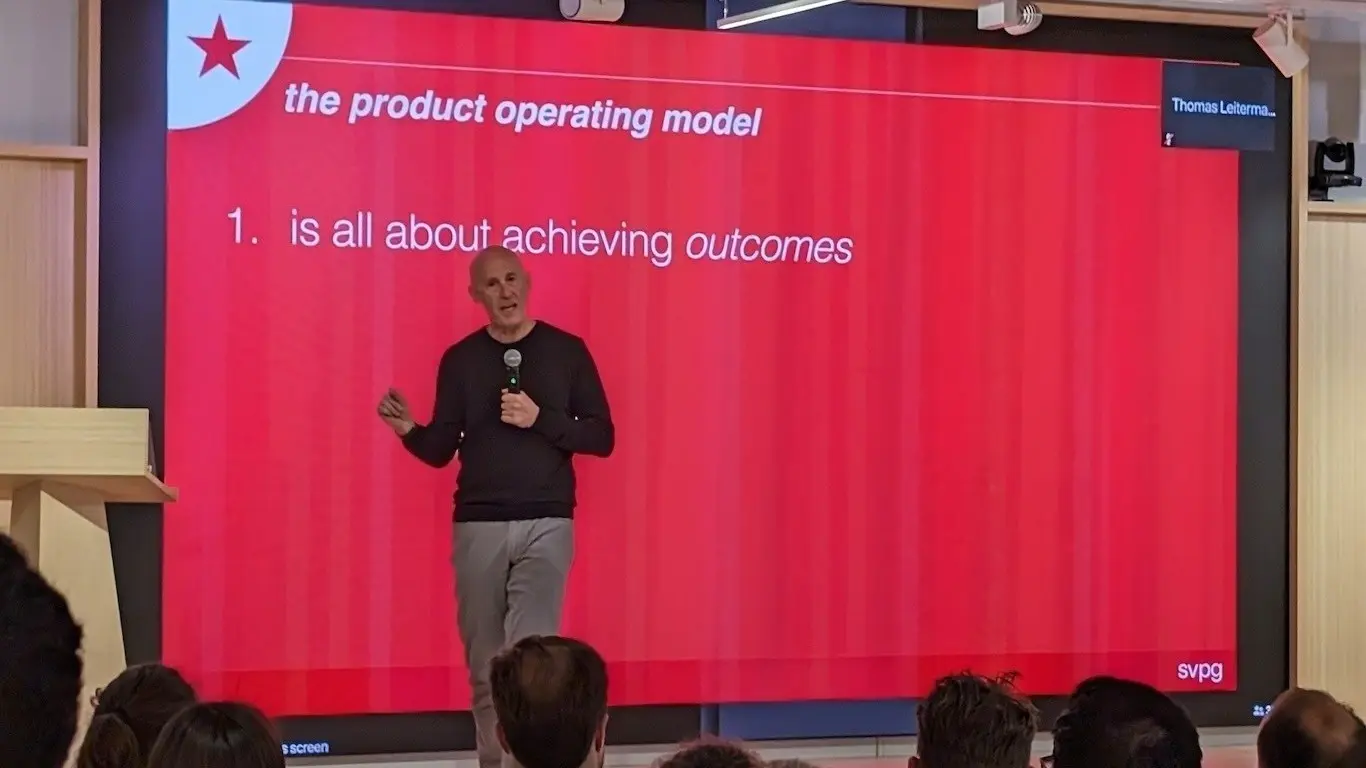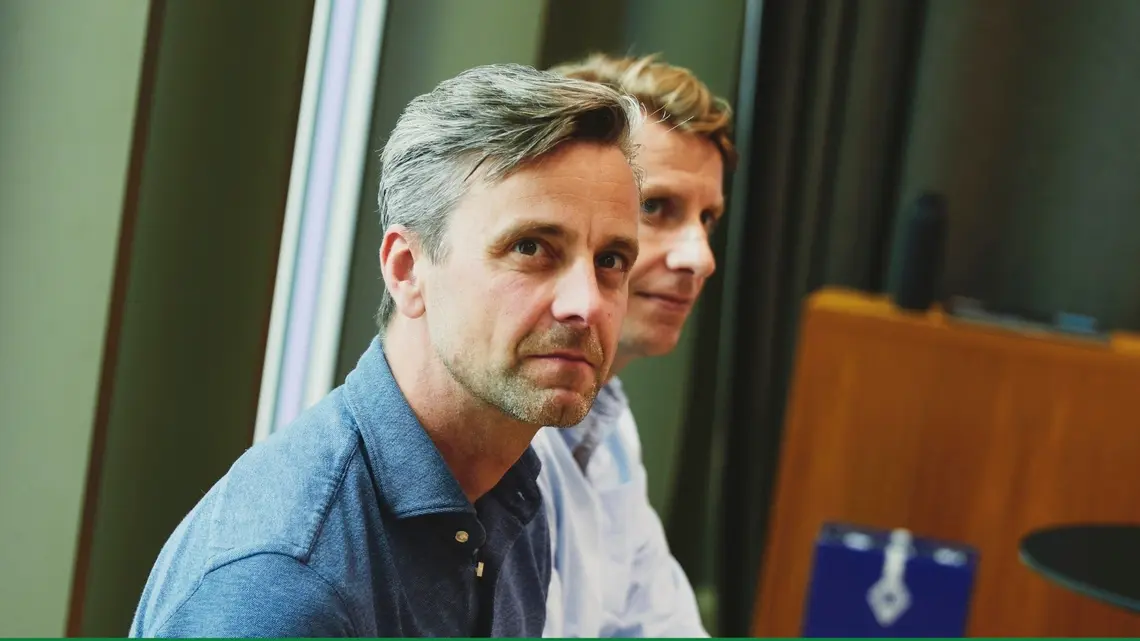May 6, 2024 - 4 minutes read

AUTHOR
Jasper Venema
Product Management Consultant
Introduction
As an avid product enthusiast, I've had the privilege of listening to and engaging with thought leaders and practitioners who are co-steering this new paradigm in its current direction.
Most recently, I attended a meetup featuring the esteemed Marty Cagan. He shared insights on how to pave the way for companies aspiring to become true product organisations.
Start with Why: Communicating the Imperative for Change
The first step in advising CEOs and senior management on embracing a product-centric model is to articulate the 'why'. Change for the sake of change is a recipe for resistance. Instead, leaders need to understand the tangible benefits: faster innovation, closer alignment with customer needs, and, ultimately, a robust bottom line. In playful terms, it's not about joining the bandwagon because it's shiny and new; it's about ensuring you're not left driving the horse and buggy in a Tesla world.
Redefining Leadership: From Gatekeepers to Gardeners
Transforming into a product company requires a shift in leadership style. Traditional command-and-control models, where decisions are made at the top and trickle down, are outmoded in a dynamic product environment. Instead, think of leadership as gardeners: their role is to nurture, provide resources, remove obstacles, and let the team cultivate the garden. This means empowering teams to make decisions close to the ground - where the action happens and where they can react swiftly to customer feedback and market changes.
Cultivating an Empowered Product Culture
One of the standout themes from Cagan's discussion was the importance of an empowered product culture. In such an environment, product teams are given problems to solve - not solutions to implement. This shift requires a deep trust in the team's capabilities and a robust framework for continuous learning and adaptation. To borrow a line from jazz, it's less about conducting a symphony and more about fostering a jazz ensemble, where improvisation and innovation lead to beautiful music.
Continuous Discovery as a Habit
If a company is the sum of its routines, then continuous discovery needs to be woven into the daily fabric of the organisation. This isn't just about occasional market research or annual surveys; it's about integrating customer feedback loops into every stage of product development. It means that every product team should be in constant dialogue with their users, testing assumptions, and validating ideas. It's akin to shifting from a diet mentality - where changes are temporary - to making a lifestyle change that's sustainable and impactful.
Implementing a Product Operating Model
The leap from traditional project management to a product operating model is perhaps one of the most tangible transformations. A product operating model focuses on outcomes rather than outputs. It’s about what we achieve, not just what we produce. Here, Marty Cagan's insights are particularly illuminating: adopting a product model means rethinking how we measure success. Are we tracking the right metrics? Are these metrics guiding us towards meaningful impacts for our customers and our business?
Educating and Equipping the Top Brass
Lastly, the transformation journey must include educating and equipping the company's leaders. They must be literate in the principles of modern product management - not to micromanage, but to provide the right support and make informed strategic decisions. This might involve tailored workshops, bringing in external experts, or immersive learning experiences. Think of it as equipping explorers with the best maps and tools for a journey into new territories.
Conclusion
Transforming into a product-centric company isn't about discarding everything that's come before. It's about evolving and adapting in ways that leverage your strengths in a digital, customer-oriented age. So, dear CEOs and management teams, consider this a playful nudge - nay, a rallying cry - to reimagine what your organisation can achieve as a true product company and seriously understand what it takes to get there!
As you ponder about Product and explore the potential within your product management practices, remember that you're not navigating these waters alone. We, the 25Friday team, are dedicated to guiding tech companies through the maze of product strategy. With our expertise in consultancy and nearshore development, we partner with organisations to fine-tune their product vision, align their teams, and craft strategies that resonate in today’s dynamic market. Reach out to us, and let's work together to turn your product challenges into successful ventures that stand out in the tech landscape.
Transforming to Product-Centric Model
Product Leadership Strategies
Marty Cagan Product Insights
Empowered Product Culture
Continuous Product Discovery
Product Operating Model
C-Suite Product Transformation
Effective Product Management
Leadership in Product Companies
Customer-Centric Product Development
Product Strategy for CEOs
Benefits of Product-Centric Approach
Innovation in Product Management
Product Management Best Practices
Adapting to Digital Age in Product Development
Related posts

Product Management
May 5, 2025
-
10 min read
Steer product development with the right goal-setting framework
SaaS product teams need clear direction. This guide explores essential goal-setting frameworks like OKR, North Star Metric, HEART & AARRR. Understand why they're vital for SaaS success—from boosting retention to powering product-led growth. We compare their pros, cons & ideal uses, helping you select the right framework to connect strategy with execution, avoid the 'build trap' & achieve measurable impact.

Sybren van Putten
Sr. Product Consultant

Product Management
March 20, 2025
-
5 min read
Connecting Product Effort to Business Success
As a product manager in a SaaS scale-up, you’re constantly shipping features, improving user experience, and optimizing workflows. But how often do you step back and ask: is this actually moving the business forward?
As a Product Management consultant, I often find product teams celebrate launches as if shipping features is the goal. But releasing stuff is different from making an impact. Without a clear connection between product effort and business success, teams risk prioritizing the wrong initiatives, struggling to get stakeholder buy-in, and ultimately becoming a cost center rather than the company’s driver of growth.

Sybren van Putten
Sr. Product Consultant